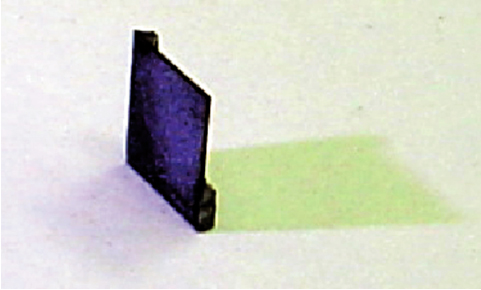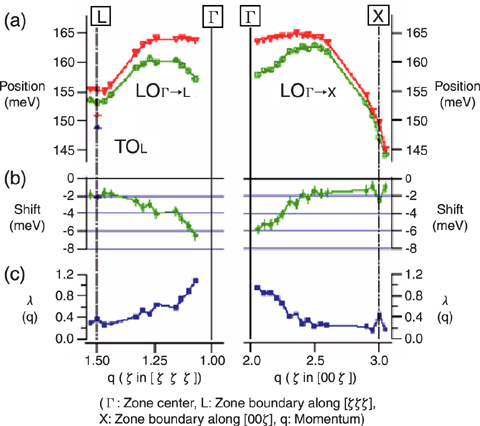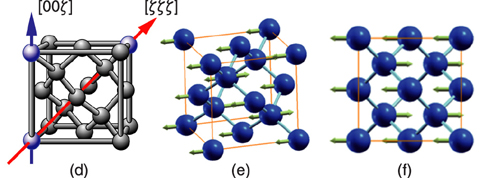
Fig.4-7
Boron doped Diamond manufactured by a CVD method. The thickness of the sample is about 100 µm.

Fig.4-8

Fig.4-9
It is well-known that the metal becomes a superconductor with zero resistivity at low temperatures. The mechanism of this superconductivity is believed that phonons mediate the coupling of two electrons at very low temperature, although they have minus charge repelling each other. This pair is called a Cooper-pair. Pure diamond is a wide band-gap insulator. When it is boron doped at a high concentration beyond the metal-to-insulator transition, more than 3 × 1020cm-3, it shows superconductivity remarkably high temperature Tc for an impurity doped material with low carrier density. It is expected that if the mechanism of this superconductivity is made clear, the way to manufacture room-temperature superconductors will be guided. Therefore, we studied the phonon of boron-doped diamond superconductors in detail. The phonon is characterized by its (1) traveling direction, (2) magnitude, and (3) energy. The relation among them is called phonon dispersion relation. We have studied the lattice dynamics in a highly boron-doped single crystal diamond whose Tc is about 4.2 K, comparing it to that of pure diamond (Fig.4-7). We focused on the Longitudinal Optical phonon mode (LO-mode), which is the highest energy phonon. Fig.4-8 shows the observed phonon dispersion relation of the LO-mode. Fig.4-9 (d) shows the observed phonon direction in real space relative to the cubic symmetry. As it can be seen in Fig.4-8, a difference in the phonon dispersion in non-superconducting and superconducting diamonds was observed; that is, the LO-mode is softened in a superconducting diamond. This phonon softening is purely dependent on the absolute value of the momentum q in the two high-symmetry directions. The softening is the biggest at the Γ point, and becomes small towards the zone boundary in both [ ζ ζ ζ ] and [ 00 ζ ] directions. The atomic movement at Γ is shown in Fig.4-9 (e) and (f) in a real space. On the other hand, no softening was observed in the acoustic phonon mode. These observations indicate that electrons are coupled to the highest energy LO-phonon mode, and this interaction could play a key role in the superconductivity of boron doped-diamonds. This observation has stimulated theoretical works to design new superconductors having higher Tc. The present work was made possible by the success in growing good single crystals and by the third generation synchrotron radiation (SR) source.